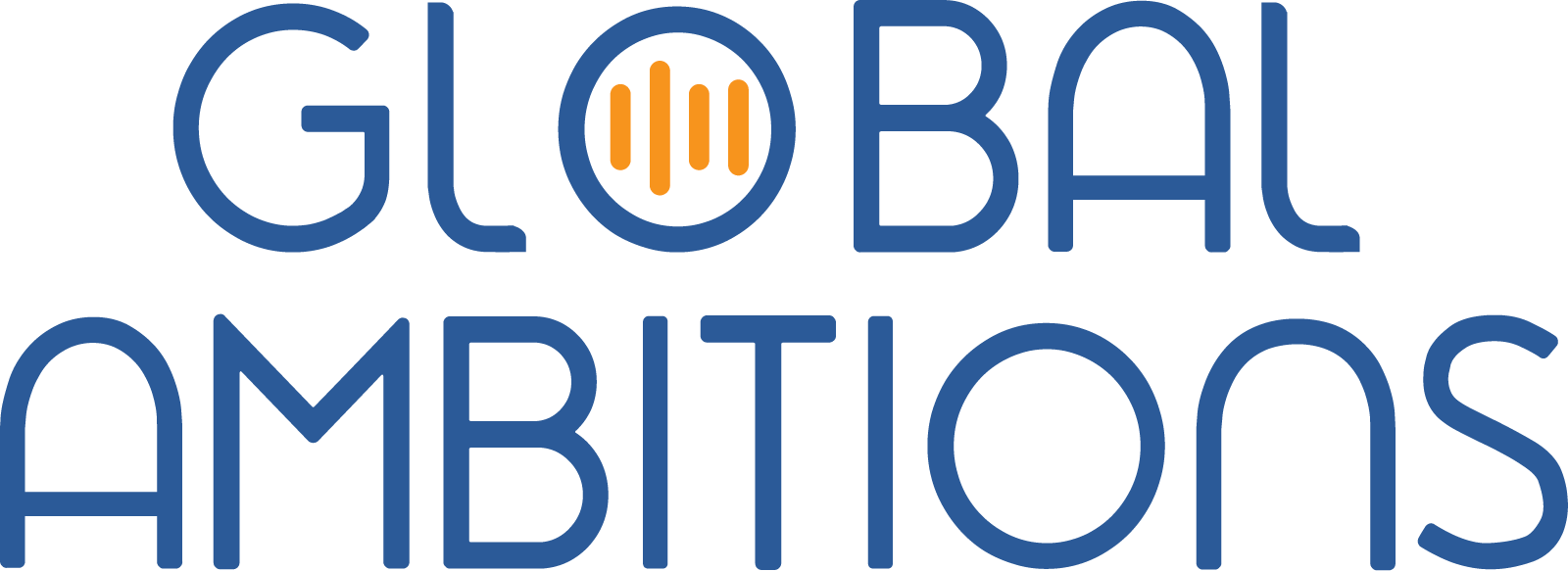With Andy Andersen, International Product Growth at Tinder
Below is a full transcript of this episode
Stephanie Harris
Hi, my name is Stephanie Harris, and I’ll be your host today for this episode of Global Ambitions. Our guest today is Andy Andersen, and he works on international product growth at Tinder and also has done international growth consulting. Andy, welcome to the program.
Andy Andersen
Thank you for having me, Stephanie.
Stephanie Harris
So today we’re going to be diving into the world of global ASO or that’s app store optimization. But before we get into that, would you mind telling our listeners a little bit about you and your professional experience?
Andy Andersen
Sure. So I’ve been working for Tinder for a while, four and a half years. And I’ve actually been working on international products and localization and all of the above that that entails at Tinder since that time. That’s been really fun. I actually started in localization, probably accidentally, like many people out in the industry. For my job prior I worked at a language service provider and that was kind of my initiation into this. But beyond that, I’ve been in the international field to some capacity has most of my life as an adult. International relations was my studies at the university and then through my early career years, I guess, if you will, I was doing a lot of traveling and kind of working abroad here and there, volunteering, whatever I could do just to get some international experiences.
And so I think all of that really transitioned and culminated into this role where I’m at now and the career path and trajectory that I’m in. Being in international product and really focused on helping companies to reach more people globally. So languages, culture, all of those are my nerd keywords if you will.
Stephanie Harris
I love it. OK, well, before we get into the nitty-gritty of ASO, maybe a more broad question. For you, coming into a mobile-first company, what’s one of the biggest challenges that you faced with the global growth aspects?
Andy Andersen
Yeah, I think whenever you start to think about companies, you kind of break out the words into like international or global. I think a lot of people use those words in this industry very interchangeably like they say, translation and localization or global and international. And all these words. But if you kind of break them out and define them differently, operating globally week to week is a good bit different than operating internationally.
If you’re operating internationally, you might be in a few markets here and there. If you’re operating globally, you really have to be scaled and you have to be able to have efficient processes that help you week over week and that requires having tooling in place, automation in place, and then just processes that allow you to be scaled and continue to be that way. Because the last thing that you want from an operational perspective is that the international side, whatever that entails at the specific company, is the stop point between something being released or something being launched or whatever. You never want that to be the case. So I think probably one of the biggest challenges is making sure that your operations are consistently scaled and consistently operating to speed.
Stephanie Harris
Yeah, when you’re looking at getting all of those different processes in place, did you have a certain priority? Like this is priority one that needs to get done and then we can sort of flesh out our tech stack? Or how would you recommend that?
Andy Andersen
I think you really have to first, you know, starting like at a company that’s just starting to go international, maybe first steps going into the global sphere is that you’ve got to take people in the team and really see where they are, shall we say, losing time. You almost have to look at it from a logistics perspective and really see where is the best value for the time that you’re spending and what kind of task can be either automated or kind of maybe pushed to some other group or something like that. And I think you need to really go through and figure out what are those inefficiencies and what can you focus on improving your timeline.
So for example, if you’re doing a lot of copying and pasting across languages in spreadsheets and all that, which some people in the early companies still have to do that, unfortunately. Can we be doing this better? Can we be improving that process? Do we have to do this every week because that’s probably wasting a lot of time on the team? And so I think consistently focusing on areas where you’re freeing up time for the team is a really good practice to go about.
But that entails having the right partners across the company, to your point, do we have the right tech stack in place? Do we have the right partners internally? Is engineering helping us to build out these processes, automation, helping with these things? This kind of mentality. But I think to add to that, I would say probably making sure that you have the right people in place, as well.
Because a lot of people think that you just hire one or two people for international. And you’re just kind of like, “Oh that’s just the thing in the corner”. But it actually should be, and what I typically advocate for and really believe across the industry, is that any kind of international core at an HQ operation should be a very functional part of product and integrated into product. Because I think where a lot of companies go wrong is building it out as a service sector or support sector where it’s on the side. That does not benefit the company and this definitely does not benefit the mobile age. You need to be a core part of the product to be the most successful. And I think that’s the mentality that separates a lot of really great apps from mediocre ones. This is where you go in that path.
Stephanie Harris
Right. OK. So I guess the next question would be jumping into our ASO topic. I know a lot of people are familiar with SEO, search engine optimization, but may not know much anything about app store optimization, ASO. So can you just share with us a little bit about ASO and what is it? What does it do? What is it? Why is it important?
Andy Andersen
Well, so the way that I would explain ASO to someone who doesn’t know anything about it, so I would explain it in two ways. One is that you can think about ASO is as SEO for a specific app store. And when I say app store, I’m using the general lowercase version, not the App Store. I’m using app stores and Google Play Store, the App Store, and then several other stores that exist in the market. But it basically is the SEO for those stores. And what ends up happening is that it all lives inside of its own ecosystem, and that’s why it’s a lot different.
You have the World Wide Web, which is SEO, which entails everything. Literally, you put something out there, a blog, web page, anything it can be found by any searching person in any language they want. But whenever it comes to content and ASO, it has to be very different because it’s tailored to the specific ecosystem of the store itself. And each of them has slightly different algorithms, slightly different touchpoints, ways that they go about actually providing content in that. And then on top of that, I would say if you’re a mobile company and so meaning that you don’t have any real web application… We do. We actually have a web app. Some people may know about that, but we have Android and iOS apps, obviously, as well. For those, you have to realize that 99 percent of everyone who will download your app is going to have to download it from one of the app stores.
So they’re either going to see an ad and they click on it. They’re going to find this organically, which are the only real two ways. It’s through either paid or organic are the main two ways that people are going to find your app. At least in bulk, shall we say. So if you’re paying a lot of money for ads and you’re not doing anything organically, you’re probably missing out on some organic numbers, and that could be quite significant for you as a company. Or it could be not that significant because it depends on the industry of the app.
There are some B2B apps where you’re not really looking at mass downloads. You’re actually focused on a specific service. That’s one type of thing. But for B2C apps or kind of more mainstream in terms of mass-market apps, organic is where you’re going to be getting the majority of your traffic in terms of that.
So the best way that I like to explain it is it is literally a storefront. So if you think about yourself walking down the main shopping street in any country in the world, if you’re walking down the street, what is the trigger on a specific store that makes you look and say, Oh, I want to look in that store? Like, Is it a keyword? Is it the visuals of the store, whatever?
And then when you get in there, your download point is purchasing something, right? So when you get into the store, you’re looking around. Is it that they have exactly what you’re looking for? Is it that there’s a specific thing that catches your eye in there and you’re just like “yeah I definitely when to purchase this.” So you can really think about it as basically the virtual version of that. And so if you do that plus the SEO side, you kind of realize that, OK, I get it that there is search involved. But then also there’s a lot of conversion to it, and you kind of think about it that way. So that’s kind of the gist of the way that I would describe it.
Stephanie Harris
So how would you even go about starting or setting up a global ASO strategy?
Andy Andersen
Yeah, it’s a really interesting question, and I think the first one of the well, I don’t know if there’s an actual order of operations, but if I would say some of the priorities, I would say that you’ve got to think about ASO in terms of where does your company fit into ASO in general.
So, for example, what type of app are you? What does the industry look like? What does the competitive landscape look like? Which languages do you currently support and drive as a company? So those are all important questions to ask yourself.
And then once you’ve answered those questions, I would say applying that into a strategy is figuring out, OK, where are you active as an app? Where will you benefit from languages? So if you’re an app and you support five languages now, it would be best to focus on those languages. But if you support 50 languages or 55 as we do, you really need to be thinking holistically. Not internationally.
You need to be thinking more globally. And so you kind of need to figure out what are the regional practices because going back to earlier in the call, if you get to global status in terms of language support, it’s not ideal to update 50 languages every single week in terms of ASO. That’s not really scalable, right? So you kind of need to come up with some best practices regionally. So like, what is your regional approach to these 10 markets or the European sector, the APAC sector, or something.
When you get into like country-specific nuances on ASO, which we’ve done in other companies do, but it’s really difficult to scale to where you’re doing that at every single country level. So you kind of need to think about ways to break up the world in terms of your specific service product offering, like whatever that is, where is your market fit? How do you market the product in these different regions? And then develop the strategy around that.
Obviously, when you double click into some of that, you’ve got on the search side keywords, your keywords. They really need to be localized and not translated. Like, there actually needs to be real, real research, real tangible hands-on keyword understanding of like what is the competitive landscape? What are the search terms that people will be finding apps like ours in those markets? I think that’s really important. But then on the side of other optimizations, it really depends on the market because it can be really complicated to understand any type of app. It doesn’t matter what your value prop is, what the landscape might be in that market, and things.
And then on top of all that I would advocate for, you know, just testing and really like not only coming up with ideas but does it work? Does it show in the numbers and things like that? Because what you don’t want is all of your work to just be in vain where you do work in a couple of different markets and then you’re not able to really see what the results have been. You need to kind of have some guardrails in place, some tracking, some understanding of what you’re doing because that benefits in a number of ways. That goes down the line of advocating for the work, but then also understanding the ROI on the effort that you and the team might be putting into something.
Stephanie Harris
Yeah. Do you have any lessons learned or examples that you have from your history of doing this where you can tell people, you know, make sure you don’t do this sort of thing? You’ve talked about setting up the testing process and all of that. Is there anything that you would say, don’t do this, it’s a waste of time? Or don’t do this because it turned out very poorly?
Andy Andersen
I think that in general, I would say that I tend to be very experimental with a lot of the projects that we do. I’m of the mentality that if you have a good idea and you’ve got a good hypothesis behind it, as long as it’s on brand and as long as it’s something that could benefit the business, I’m cool with trying. And I think it’s a good idea because that’s how you get learnings.
I think being experimental, trying things, pressing buttons, you know, if you will, those kinds of things are really helpful. And so one thing I would say is don’t be afraid to just take chances and take risks because you don’t know what may be impactful and what may not be for your specific app, your specific brand. It’s really helpful to try different things and see what might be working in the industry because you could be a totally new app in your field and you might be doing something innovative and it might be cool to showcase that.
But then other apps, there might be a very competitive landscape, and it might be like, you know, there might be a need to align with what other people are doing in that category or something. And so I think being experimental and not being afraid for things not to work out is one learning lesson. Because I think a lot of companies are hesitant to change things. They’re like, Oh, we don’t want to change that or we don’t want to do this. But the thing is, is that you might be currently here and you might be like doing one thing. But then what if you do something and it makes you way over here and it really helps benefit what you’re doing? So that’s probably one thing.
Stephanie Harris
Yeah.
Andy Andersen
If I were to say anything else, I would say probably just really getting an understanding of what users want in different markets I think can be helpful. Understanding what a market requests, what’s popular in the market, what feature or something like that could all be impactful depending on the market.
Stephanie Harris
OK. Do you have anything else that you could give some advice to anyone who’s looking at doing this sort of localization global growth program?
Andy Andersen
Yeah, I think a couple of things on this, actually. I think one of the places that many companies go wrong is kind of what I was saying earlier in the call. I think that they just look at international localization, whatever you want to call it, as a kind of an afterthought. It’s like, Hey, what can we… We need to get some translations. We’re seeing some promise, you know, like it’s usually a startup company. They’re like, OK, now we’re looking and we’re seeing, Oh, there are new markets. Maybe we can expand into Spanish-speaking markets, whatever. So they just say, OK, we need translation, and they usually just pick someone on the team. Maybe that speaks the language or maybe a marketing manager or something.
And they just kind of say, Oh, you’re going to do this and you’re going to drive this. And then that person starts asking everyone else in the industry. They end up with language service providers or whatever the first things that pop up on Google for them are. The reason I’m saying that is because I think actually investing in this space where you hire people who really understand international markets and then also that are fundamentally aligned with that international should be a core functionality of product will really set yourself up for the long run. It’ll really, in many cases, put you ahead of a competitive landscape.
A lot of startups are usually competing in a specific field, you know, like whether they’re fitting a niche or whatever. And what a lot of times happens is these startups go into this growth trajectory where they’ve got really great growth in a market, usually like the United States or another main market where they start. And then at some point, they have to stop and they have to go backwards to international. Yeah, and then they go like six months, nine months to create this whole international plan while the other people could potentially be moving forward.
So in that, if you actually think about International… to oversimplify and overgeneralize the word, OK, we’re starting in the U.S., we’re an English app, you know, we don’t need any other languages. Well, there are different speaking people in the United States and the same thing with any other country on Earth. Languages transcend borders. More than ever now. And so when you think about it. Companies should be thinking about international almost from the beginning. Not maybe at the seed stages of being a company, but when you start getting funding rounds like Series A, Series B, whatever you should already be doing international. In my mind, it is sure to be a priority because you’re not only opening yourself to new markets, but you’re opening up yourself to markets that exist within your primary market. So if you’re in the U.S. and you’re a U.S.-based tech company, don’t ignore the Spanish-speaking market of the United States. It’s significant.
Stephanie Harris
Well, great. It’s been a real great pleasure to talk with you and get those insights on the industry in general as well as ASO.
Andy Andersen
Well, thank you for having me on the show was a pleasure.

Andy Andersen
International Product Growth at Tinder




